Webinars have become a powerful tool for marketers looking to engage with their audience, generate quality leads, and deliver valuable content efficiently. Global advertising spending has surpassed $1 trillion in 2024 according to the WSJ. Marketers need to find creative ways to engage with their audience in a growing competitive sector. Hosting a webinar offers a unique mix of reach, interaction, and data capture that other formats simply can’t match. They can be repurposed and used in many creative ways to attract and educate your audience.
This guide explores the benefits of webinars for marketers, drawing from industry best practices and real use cases. Whether you want to attract more potential customers, support product launches, or increase brand awareness, webinars are now a core marketing tool — not a nice-to-have.
Why Webinars Belong in Every Modern Marketing Strategy
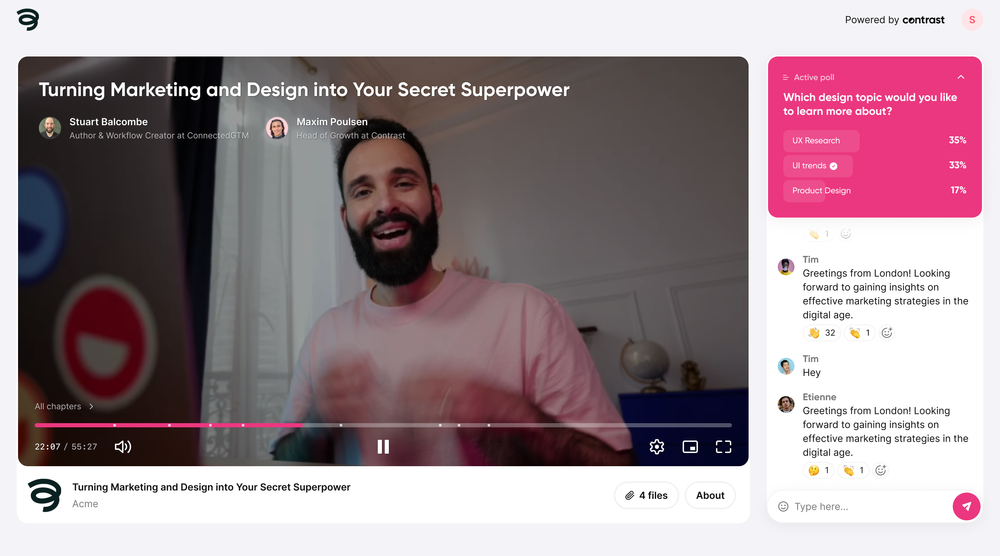
What Is a Webinar (and Why Marketers Should Care)
A webinar with your audience is a live, online presentation delivered over the web. It's not only a lecture — it's a professional session where marketers share insights, launch new features, or educate their target audience.
Webinars offer an opportunity to share educational content in real time while also capturing valuable data about participants. Unlike static formats, they allow marketers to interact with potential customers, answer questions, and track engagement. Video content is projected to account for 82% of all internet traffic by 2025. It has become essential to integrate video marketing into your content strategies.
The digital nature of webinars makes them especially effective in today’s remote work environment. They’re accessible from anywhere with a stable internet connection, making them ideal for reaching a large audience without the logistics of a physical conference.
Webinars vs. Other Marketing Channels: What's the Real Advantage?
Webinars are not just a digital seminar. Our webinar vs seminar comparison highlights an important distinction — seminars are in-person and costly, whereas webinars are cost effective, scalable, and more inclusive.
Webinars run with minimal resources, yet provide valuable insights in return. Marketers can deliver rich, visual content through PowerPoint presentations, audio, and live screen sharing — allowing attendees to see, hear, and ask questions from wherever they are.
From Seminar to Screen: The Evolution of Webinars in B2B and B2C
Once used only for product demos or internal employee training, webinars have evolved into dynamic marketing tools. They now serve a critical role in both B2B and B2C. Companies host webinars to build trust, support sales, and share thought leadership with their audience.
Modern webinar platforms offer rich features — from application sharing, polls, and chat to analytics dashboards — that help teams turn a live session into a valuable marketing resource.
In addition, these tools provide much more than just reach. They give marketing teams insight into who’s attending, how long they stay, and what content they engage with helping them turn leads into customers. This level of detail is hard to match in other formats.
The Strategic Impact of Webinars Across the Funnel
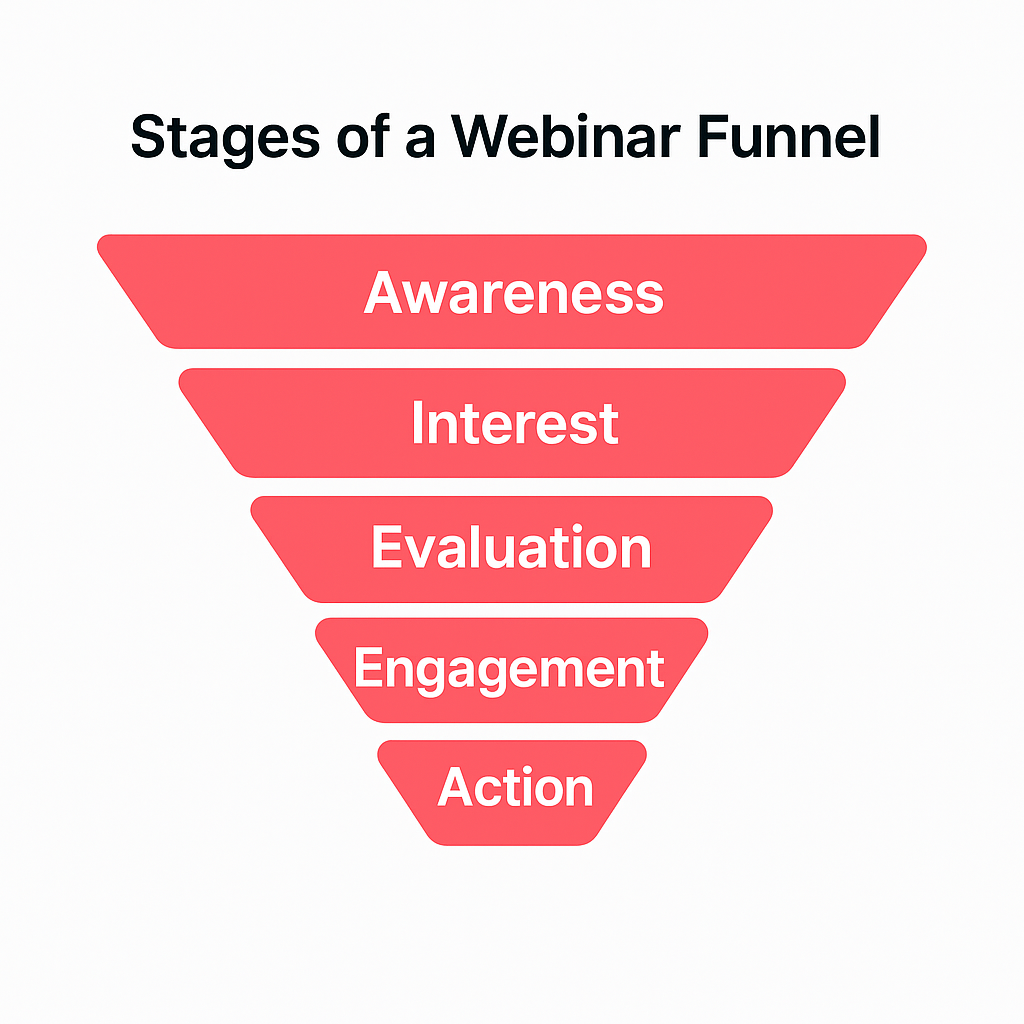
Lead Generation and Qualification: Reaching the Right People
Webinars are a great way to generate quality leads. Registration signals interest. But beyond that, live interactions, such as questions asked or polls answered, offer behavioral signals that help nurture quality leads and qualify them in real time. For example, influencers and affiliate marketers drove about 20% of Cyber Monday e-commerce revenue in the US, a 7% increase from the previous year, demonstrating the power of targeted digital engagement.
Thanks to webinars, you can segment attendees into MQLs or SQLs based on their actions during a presentation, making follow-ups more targeted and relevant. They are a rich source of qualified and structured data for your marketing campaigns.
Sales Enablement and Product Demonstration: Educating with Purpose
Webinars can serve as product or service demos, educating prospects at scale. Sales teams can run sessions with marketing or act as co-presenters, building rapport with potential clients and contact points across key accounts.
They are also ideal for launching new features, handling objections live, and guiding their development teams with real-time feedback from users.
Building Brand Authority and Industry Thought Leadership
Marketers also use webinars to position their organization as a thought leader. They do this by inviting guest speakers, showcasing clients, or collaborating with other companies in their network to build credibility.
By consistently offering valuable content, you can strengthen your brand’s image, support content marketing, and drive brand awareness in your sector. Effective brand storytelling can lead to a 30% increase in conversion rates. Webinars become a strong solution to improve your brand visibility across several channels.
Relationship Marketing: Humanizing the Brand
A webinar with customers or leads adds a human layer to your brand. When attendees hear your team speak live, share stories, and answer questions, the brand feels more personal. This is essential in a world where buyers crave authentic, professional interactions — not polished ads or Ai-generated content.
Engagement, Interactivity, and Content Longevity
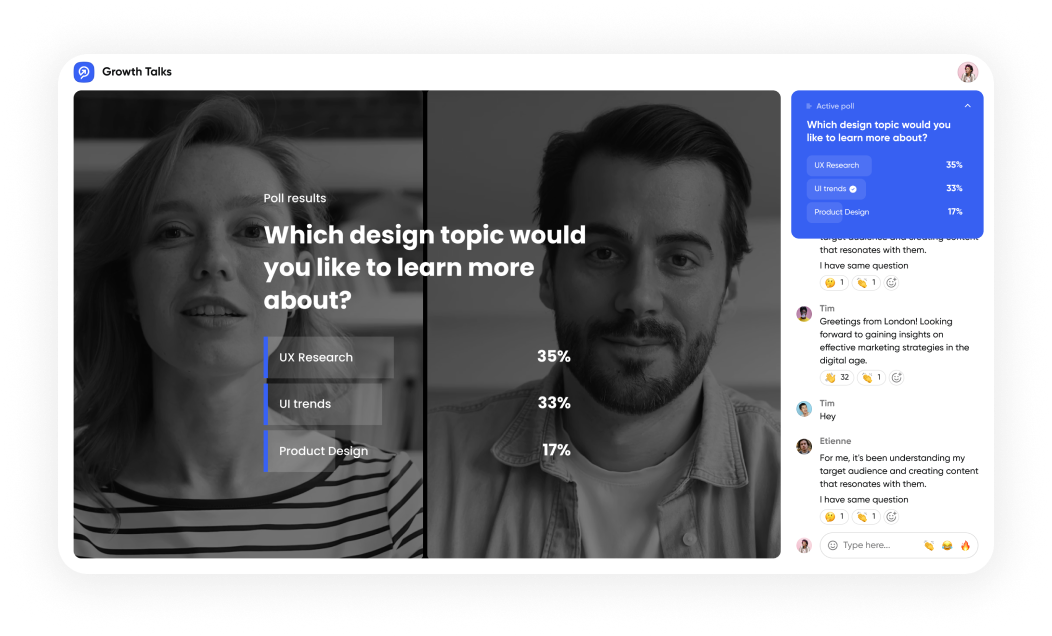
Why Webinars Drive Higher Engagement
Webinars engage with your audience in ways most formats can’t. With built-in tools for live chat, polls, and Q&A, they invite audience engagement, not just passive consumption.
People who participate in webinars are more likely to convert because they’ve already invested time and attention with your company. They also get their individual questions answered, making them feel more connected to your solution. This makes webinars a key part of nurturing a marketing funnel.
Interactive Features That Keep Audiences Involved
The best webinar platforms support real-time interaction. You can use PowerPoint slides, share your screen, embed media clips, and enable chat — all in one application. Attendees can ask questions, vote on polls, and even download handouts or resources live.
This interactivity improves customer experience and helps improve customer understanding of your product or service.
Creating Evergreen Content from Live Events
Don’t let a single presentation be a one-time event. Record the session and turn it into on-demand content. These recordings can serve as sales follow-ups, onboarding materials, or training videos — especially in the training industry. Video content is more engaging than text or image-based content because it can convey more information in a shorter amount of time, making it ideal for repurposing into evergreen materials.
One webinar can be repurposed into many other marketing efforts, extending your content’s reach.
Repurposing Webinar Content for Greater Reach
Webinars are perfect for content creation. One event can be repurposed into:
- Blog summaries
- Video clips
- Newsletters
- Quotes
- Social media posts
- Sales enablement content
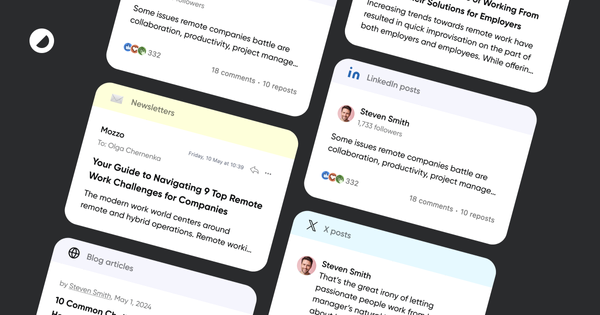
HubSpot reports that embedding relevant video content on a landing page can increase conversions by as much as 86%, which is why marketers are consistently looking for engaging video formats to insert in their website landing pages and blog articles. This brings value to the user while visualizing specific characteristics of their products or services.
Finally, webinars are a powerful tool for reaching a wider audience. You can repurpose webinar content across multiple customer journeys to create additional touchpoints.
The Hidden Operational Benefits of Hosting Webinar
Cost Efficiency Compared vs Traditional Events
Compared to in-person conferences, webinars are incredibly cost effective. There’s no need for accommodation, travel, or venue fees. You also reduce employee time spent on logistics allowing teams to focus on value creation instead.
Global Reach and Convenience Through Online Access
Webinars can be accessed from anywhere making them ideal for global companies and remote organizations. They allow marketers to reach out to international audiences without worrying about borders or time zones.
Gated Registration and First-Party Data
Attendees fill out forms before joining — giving you access to first-party contact data. This includes name, email, company, and role — all valuable for CRM enrichment and segmentation.
This data helps you take action quickly by targeting with precision rather than guesswork.
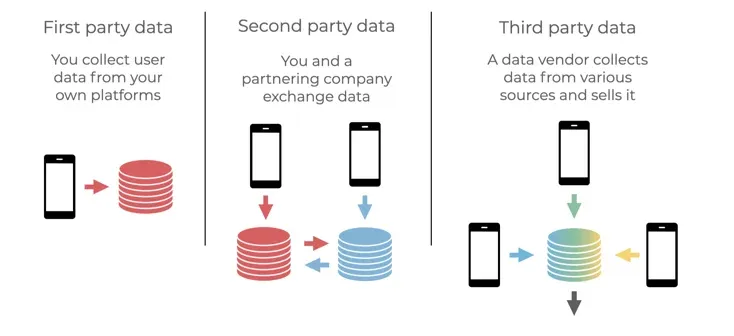
Accessibility, Flexibility, and Real-Time Insights
With flexible scheduling, live or recorded options, and chat-based participation, webinars offer low friction for both hosts and viewers. Real-time audience feedback helps you make the session more relevant for viewers and makes it easier to spot issues that may arise.
Key Best Practices to Make Webinars Work
Choosing the Right Topics for Your Audience
Don’t guess. Use customer feedback, search queries, and internal data to select topics. Aim for topics that address pain points or explore best practices in your market. When your content is relevant to your audience, they are more likely to attend and stay engaged throughout the session.
Topics should be timely, focused, and aligned with your marketing goals.
Structuring for Success: From Scheduling to Format
Keep webinars short (45–60 minutes), well-paced, and focused on outcomes. Use a format that includes introduction, value-driven content, audience participation, and a strong close. Structure it like a mini-conference — with interaction throughout.
Picking the Right Speakers and Moderators
Choose speakers who know your audience and can speak naturally. Experts who are comfortable with the topic come across as more genuine and relatable. The best webinars feel conversational, not scripted. Moderators should manage the chat, handle transitions, and step in if any technical problem arises.
Using Data and Feedback to Improve Webinar Quality
After each webinar, review:
- Registration sources
- Attendance rates
- Drop-off points
- Poll responses
- Time-watched
- Chat messages
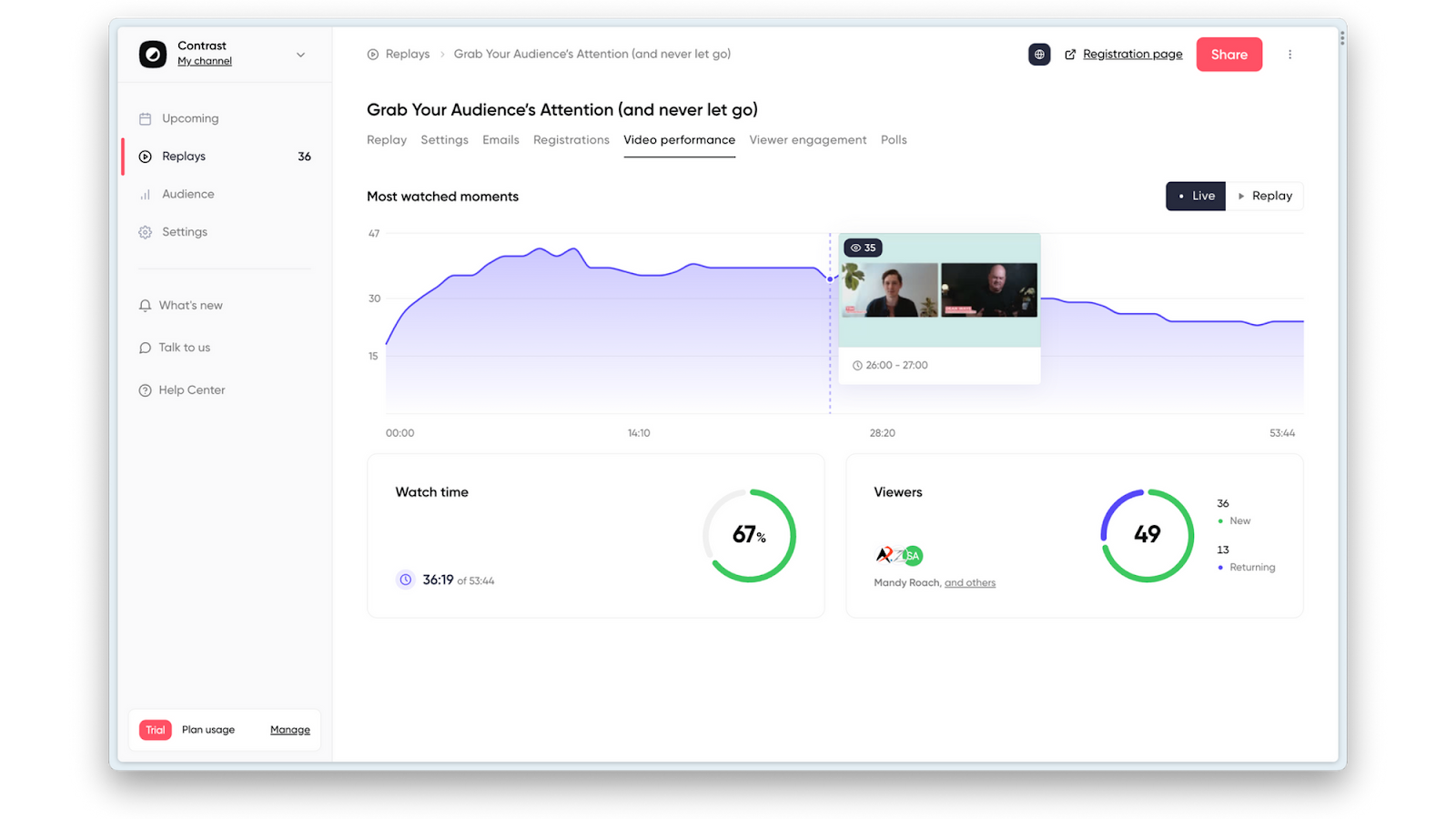
Use this to learn what worked and optimize future sessions. This is a crucial step in measuring webinar ROI.
Technical Setup and Tools That Maximize Results
Features Your Webinar Platform Must Offer
At a minimum, your webinar software should offer:
- CRM integration
- Live chat and polls
- Custom branding
- Analytics dashboards
Some platforms also support networking rooms, AI-powered summaries, and webinar marketing automation.

Choose the right webinar platform
Contrast offers a complete solution—no extra tools required.
Start for freeManaging Audio, Video, and Presentation Elements
Test your video, audio, and slides beforehand. Make sure your PowerPoint slides are visual, not text-heavy. A good image or chart communicates faster than a paragraph. Invest in a quality mic and stable internet connection to reduce risk.
Live, On-Demand, and Simulive: What Format Works Best?
Use live webinars for engagement, on-demand for scale, and simulive (pre-recorded sessions with live chat) for hybrid flexibility. Each format serves a different purpose within your funnel.
Integrating Webinars with Your Marketing Stack
Your webinar platform should sync with your CRM, email tools, and analytics suite. This integration helps you track conversions, assign lead scores, and measure pipeline contribution. It's key in making webinar marketing part of a broader strategy.
Overcoming Common Challenges and Misconceptions
“Webinars Are Dead” and Other Myths
The idea that webinars are outdated ignores their evolution. Technology now enables more engaging, data-rich experiences. Marketers can now run webinars that feel less like a lecture and more like a conversation.
Solving Attendance and Engagement Drop-Offs
To avoid no-shows, send reminders, highlight value, and offer replays. To boost engagement, focus on delivering content tailored to your audience, create opportunities for interaction, and choose a platform with features that support these efforts.
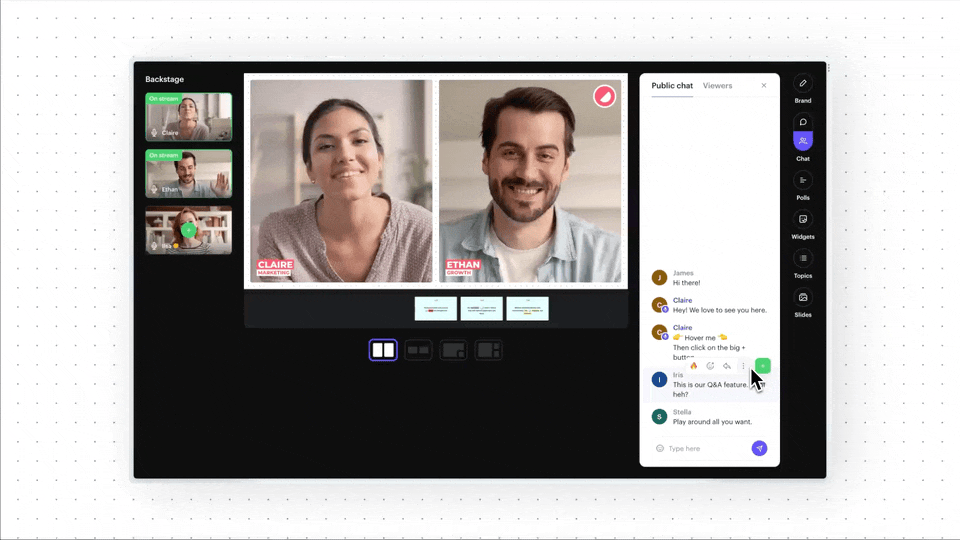
Remember, boring or irrelevant content leads to low attendance and shorter watch times.
Handling Technical Issues with Grace
Have a backup plan in case of audio or video failures — mistakes happen, so be ready to roll with them. Some platforms offer local recording ensuring you still have a high-quality video for on-demand viewing. Assign a moderator to animate the chat, spark conversation, and keep the energy high throughout the session.
Avoiding Webinar Fatigue Through Fresh Formats
Switch it up: host a webinar with a client, try a panel, use interviews, or tell stories. Rotate voices and visuals. The goal is to learn from the best, not repeat the same format every time. Pay attention to what your audience responds to and incorporate those insights into future sessions.
Future Outlook: The Evolving Role of Webinars in Marketing
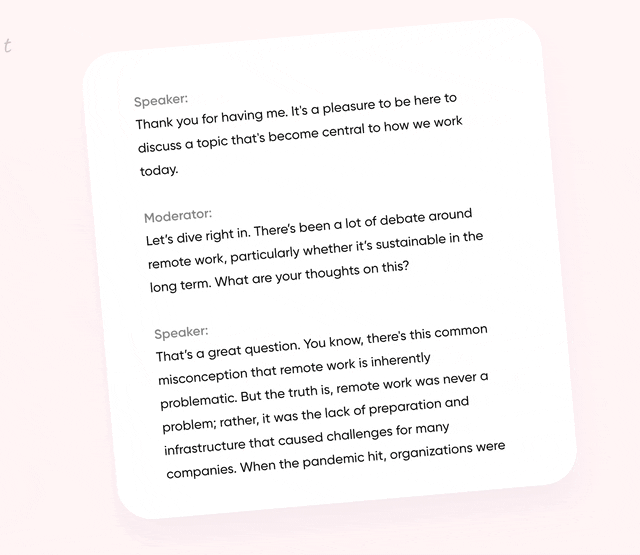
Personalization and AI in Webinar Content
Webinars are becoming easier. AI can now tailor invites, segment leads, summarize content, and even create new content automatically. This makes every event more relevant and scalable.
From Static Presentations to Immersive Experiences
Expect webinar applications to feel more like Netflix than slideshows. With overlays, embedded video, and audience-driven navigation, webinars are becoming interactive digital experiences. If your webinar feels like a zoom call then you probably need to reassess.
Gamification, Networking, and Real-Time Feedback
Incorporate gamification into your sessions. Rewards, chat rooms, and micro-interactions help turn passive viewers into active participants, boosting both retention and learning outcomes.
Webinars in the Post-Cookie, First-Party Data Era
As cookies disappear, webinars offer rich first-party data that you control. From sign-up to follow-up, they support compliant, high-converting campaigns. As security and privacy standards tighten, building a localized community through webinars gives you more control over your data and customer relationships.
Conclusion: Webinars Aren’t Just a Tactic — They’re a Strategy
In 2025 webinars offer the best of both worlds: real-time engagement and long-term lead generation. They provide visibility, trust, interaction, and valuable insight — all wrapped in one scalable format.
If your company is serious about growth, you should host a webinar. Not just once, but as a consistent part of your content marketing strategy. Webinars allow marketers to educate, engage, and convert — all at once.

